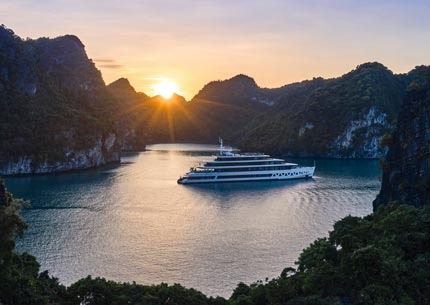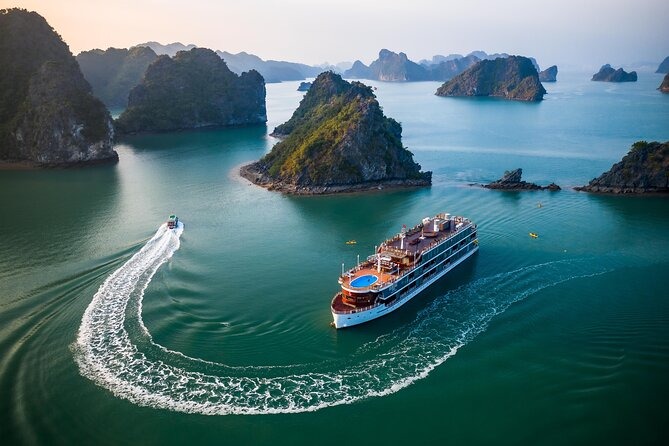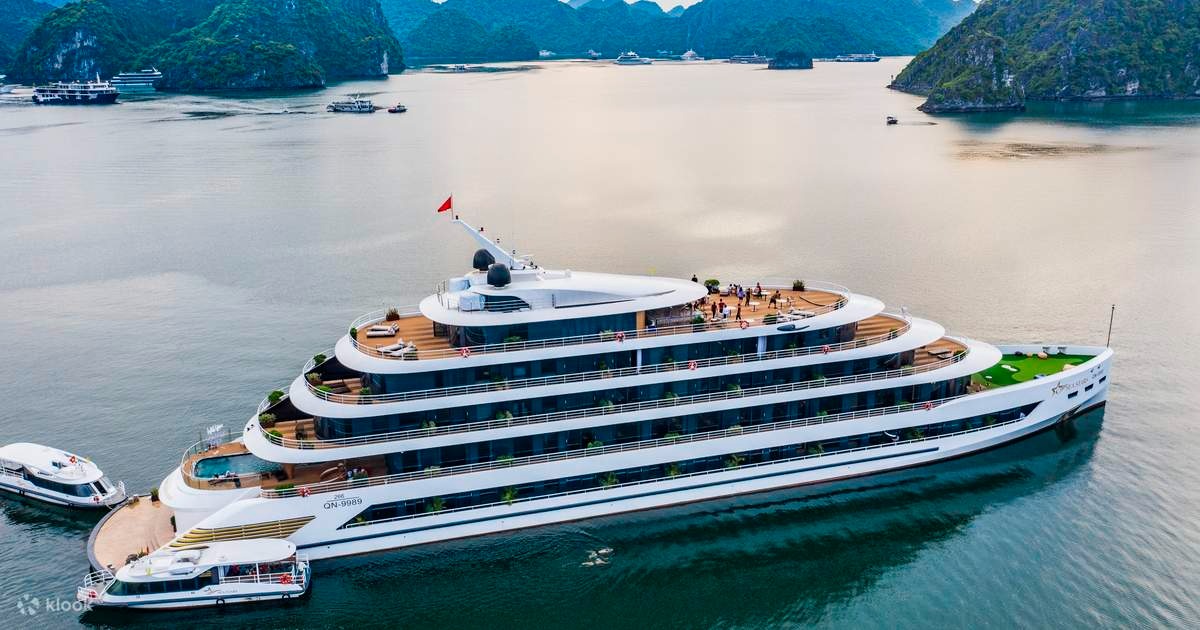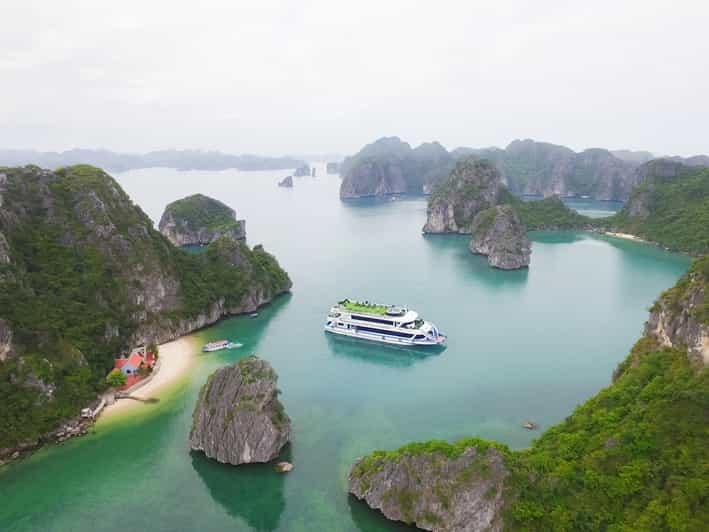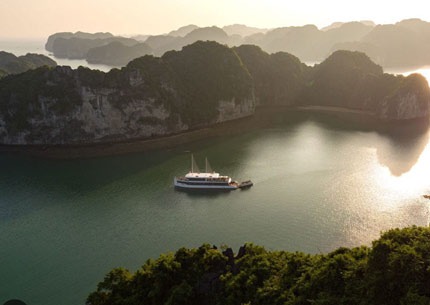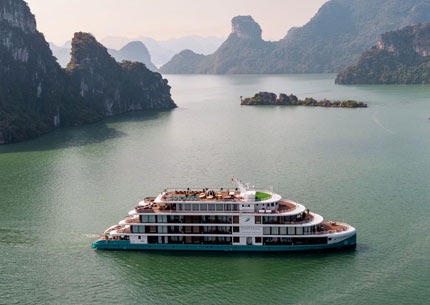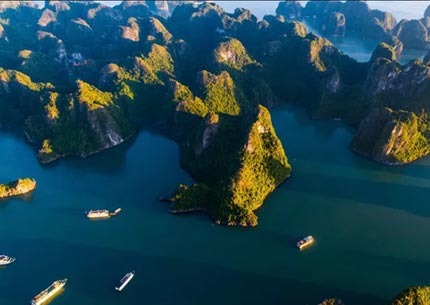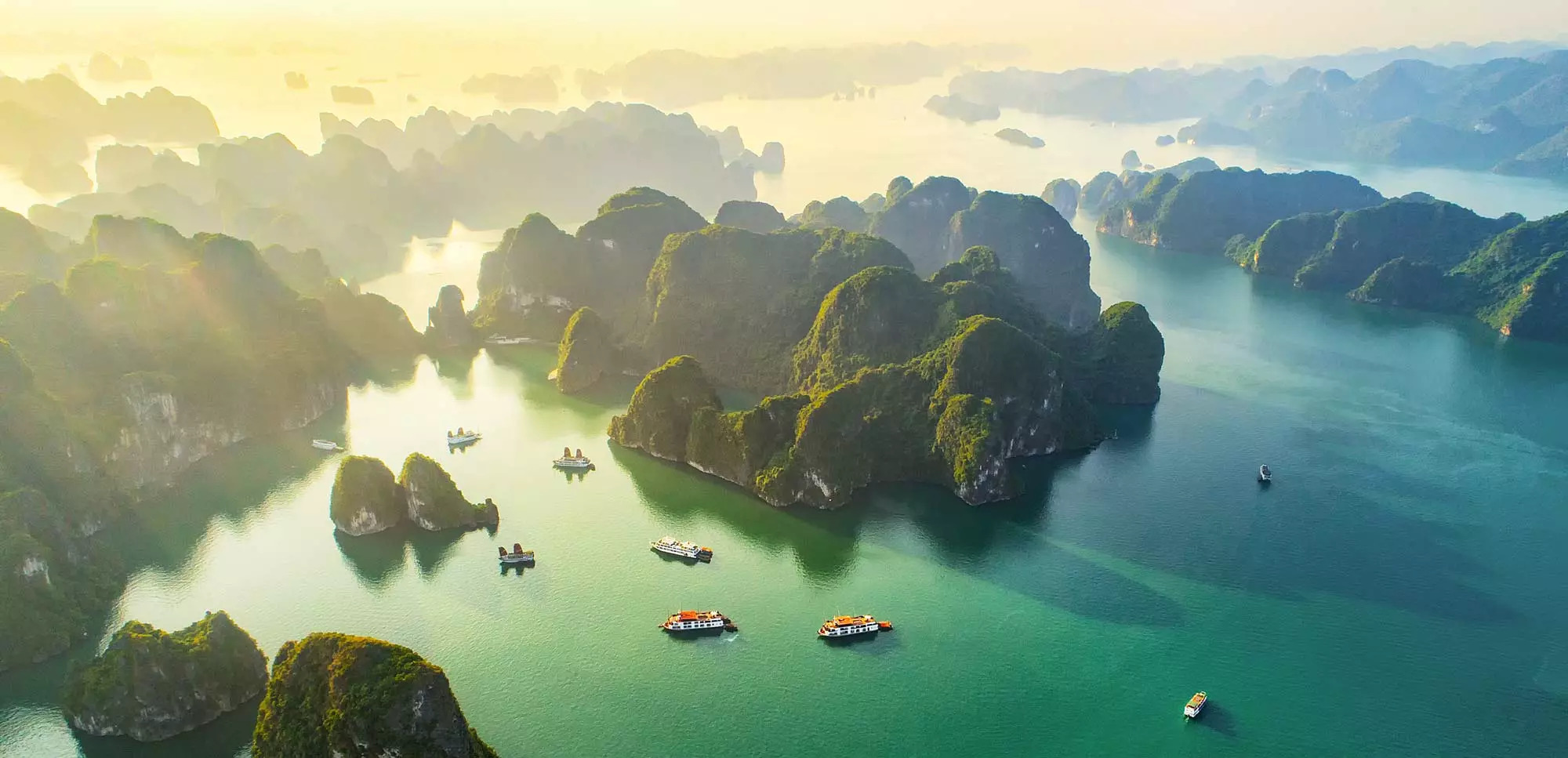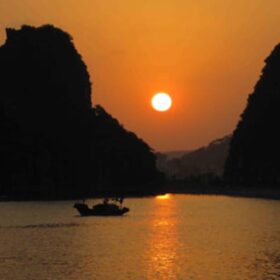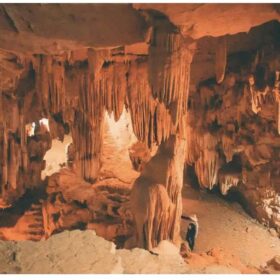What Makes Halong Bay So Special? 15 Extraordinary Reasons for Travelers
Discover why Halong Bay captivates millions with its limestone karsts, luxury cruises, and hidden wonders
Halong Bay stands as Vietnam’s crown jewel, a place where nature’s artistry reaches its pinnacle. This UNESCO-recognized treasure draws travelers from across the globe, each seeking to witness the emerald waters and towering limestone formations that have made it legendary. But what truly elevates Halong Bay from merely beautiful to genuinely extraordinary? As we look toward 2025, let’s explore the 15 remarkable elements that make this destination unlike any other on Earth.
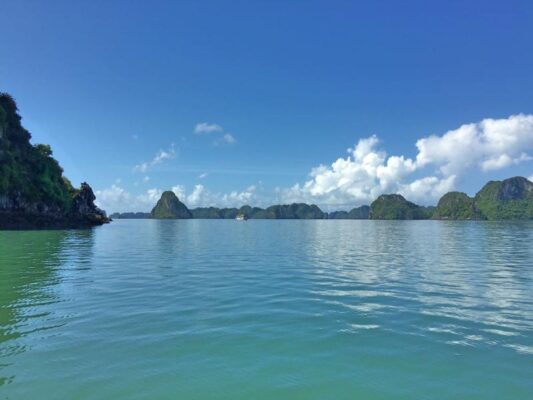
1. An Ancient Wonderland of Limestone Formations
Halong Bay’s most iconic feature—its limestone karst landscape—represents one of nature’s most spectacular geological exhibitions. These formations aren’t just visually striking; they’re living monuments to Earth’s ancient past.
The Geological Marvel That Took 500 Million Years to Create
What we admire today in Halong Bay began forming during the Carboniferous period, approximately 500 million years ago. Through countless cycles of tectonic activity, these limestone formations underwent compression, uplift, and erosion to create the dramatic seascape we see today. Each island tells a chapter of Earth’s geological story, with visible layers of sedimentary rock revealing different epochs of formation.
1,969 Islands and Islets Each With Unique Character
The bay encompasses a staggering 1,969 islands and islets spread across 1,553 square kilometers of sea surface. Unlike other karst landscapes worldwide, Halong Bay’s formations are distinctive for their density and vertical nature—many rising 50-100 meters straight from the water’s surface. Famous formations like Trong Mai (Fighting Cocks) Islet and Dinh Huong (Incense Burner) Island have become symbols of Vietnam itself, featured on currency and in national tourism campaigns.

2. UNESCO’s Double Recognition for Outstanding Universal Value
Few natural sites worldwide can claim the distinction of dual UNESCO World Heritage recognition, placing Halong Bay among an elite global category.
First Recognition in 1994 for Aesthetic Value
When UNESCO first inscribed Halong Bay in 1994, the committee specifically cited its “outstanding visual quality” and “exceptional natural beauty.” This recognition acknowledged not just the bay’s picturesque quality but its unique concentration of limestone islands that create an unparalleled seascape.
Second Recognition in 2000 for Geological and Geomorphological Value
The second UNESCO recognition in 2000 specifically highlighted Halong Bay’s geological significance as the most extensive and best-preserved example of marine-invaded tower karst in tropical waters. This dual designation ensures ongoing international protection and conservation support, with annual UNESCO monitoring to maintain the site’s integrity as visitor numbers continue to climb past 2.5 million annually.

3. Luxury Cruise Experiences That Rival the World’s Best
Halong Bay has evolved from a day-trip destination to a luxury cruise haven, with vessels that combine Vietnamese hospitality with world-class amenities.
Five-Star Floating Hotels With Panoramic Views
The premium cruise vessels operating in Halong Bay in 2025 offer accommodations that rival luxury hotels. Top-tier options feature spacious suites (some exceeding 55 square meters), private balconies, and floor-to-ceiling windows that frame the limestone panoramas. Many vessels, like those operated by Halong Bay Lux Cruises, have incorporated design elements that maximize viewing opportunities—from glass-walled bathrooms to rooftop observation decks.
Gourmet Dining That Showcases Northern Vietnamese Cuisine
Onboard dining has become a highlight of the Halong Bay experience, with executive chefs crafting menus that blend international standards with authentic Vietnamese flavors. Fresh seafood features prominently, often sourced directly from local fishing villages. Many cruises now offer interactive culinary experiences, including Vietnamese cooking classes where guests learn to prepare regional specialties like Halong-style grilled squid or steamed clams with lemongrass.
4. Subterranean Wonders in Limestone Caves
Beneath the surface beauty lie hidden worlds of stalactites, stalagmites, and chambers that have inspired legends and awe for centuries.
Sung Sot Cave: The Bay’s Most Magnificent Natural Cathedral
Sung Sot (Surprise) Cave lives up to its name with its sheer scale—covering over 10,000 square meters with ceiling heights reaching 30 meters. The cave features two massive chambers, each adorned with formations that local guides poetically identify as dragons, trees, and mythological figures. Sophisticated LED lighting installed in 2023 illuminates the formations while minimizing environmental impact.
Dau Go Cave’s Rich Historical Significance
Beyond its natural beauty, Dau Go Cave (Wooden Stakes Cave) carries historical importance dating back to the 13th century. Legend holds that General Tran Hung Dao ordered wooden stakes placed here before being planted in the Bach Dang River to defeat Mongol invaders. The cave spans three main chambers with a total length of 145 meters, featuring dramatic rock curtains and what locals call the “Royal Garden” formation at its heart.
5. Pristine Beaches Hidden Among the Karsts
While Halong Bay is primarily known for its seascape, its secluded beaches offer perfect contrast and relaxation opportunities.
Ti Top Island’s Picture-Perfect Crescent Beach
Named after Soviet cosmonaut Gherman Titov following his visit in 1962, Ti Top Island features a crescent-shaped beach with remarkably clear waters. The beach spans 400 meters around a protected bay, making it ideal for swimming. A 15-minute climb to the island’s 110-meter summit rewards visitors with a breathtaking 360-degree view of Halong Bay—one of the most photographed vistas in Vietnam.
Ban Chan Beach’s Pristine Sands and Crystal Waters
Less frequented than Ti Top, Ban Chan Beach offers a more secluded experience with extraordinarily fine white sand. The beach is nestled between towering karsts that create a natural swimming pool effect in the bay. The water clarity here allows visibility up to 2 meters depth, making it exceptional for snorkeling. Many 3-day luxury cruise itineraries include extended stops at these hidden beaches, allowing guests to fully appreciate their untouched beauty.
6. Rich Marine Biodiversity in Protected Waters
The emerald waters of Halong Bay harbor an astonishing array of marine life, making it a vital ecological zone.
Over 1,000 Fish Species in a Delicate Ecosystem
Scientific surveys have documented more than 1,000 fish species inhabiting the bay’s diverse marine environments. This includes several species found nowhere else, such as the Halong butterfly fish (Chaetodon faligistrius) with its distinctive black striping. The varied underwater topography—from shallow coral gardens to deeper channels—creates multiple habitats supporting this remarkable diversity.
Coral Reefs That Support the Entire Bay’s Ecosystem
Although less visible to casual visitors, Halong Bay’s coral reefs form the foundation of its marine ecosystem. Over 200 coral species have been identified, particularly in the less-trafficked outer regions of the bay. Conservation efforts since 2020 have created several marine protected zones, with some areas showing up to 35% coral coverage recovery. These reefs serve as crucial nurseries for fish populations and buffer the limestone islands from wave erosion.
7. Living Culture in Floating Villages
The floating communities of Halong Bay represent one of Southeast Asia’s most distinctive cultural adaptations to maritime life.
Cua Van Village: Preserving Centuries of Maritime Tradition
Home to approximately 300 residents (down from 700 in 2010), Cua Van remains the largest floating village in Halong Bay. Families have lived here for generations, with some tracing their ancestry back 19 generations. The village features a floating cultural center and school, where traditional fishing methods, boat building, and pearl cultivation techniques are preserved and demonstrated for visitors.
The Vung Vieng Fishing Community’s Sustainable Practices
Vung Vieng has evolved into a model for sustainable tourism, with local families participating in regulated home-stay programs that provide authentic cultural experiences. The community has developed specialized fishing techniques adapted to the karst environment, including unique fish traps designed to work among the rocky outcroppings. Visitors can observe the entire seafood supply chain, from morning catches to evening preparation of specialties like Halong Bay clay pot fish.
8. Spiritual Significance and Sacred Sites
Beyond natural beauty, Halong Bay holds deep spiritual importance in Vietnamese culture and Buddhism.
Ba Hang Temple: Where Sea Goddess Worship Continues
Perched dramatically on a limestone outcropping, Ba Hang Temple honors the sea goddess Thiên Y A Na, protector of fishermen and sailors. The temple dates to the 15th century and remains an active place of worship, particularly during lunar festivals when hundreds of fishing boats gather for blessing ceremonies. The temple’s architecture integrates harmoniously with the natural rock formations, exemplifying Vietnamese sacred space design.
Tam Cung Cave’s Ancient Spiritual Importance
Archaeological discoveries indicate that Tam Cung Cave served as a spiritual site dating back at least 7,000 years. Evidence of early animist rituals has been found in its three chambers (hence the name “Three Palaces Cave”). Buddhist monks later established meditation retreats here, attracted by the cave’s natural acoustics that amplify chanting to create an otherworldly resonance. Today, visitors can observe wall carvings and altars dating from various historical periods.
9. Year-Round Appeal With Distinct Seasonal Charms
Unlike many destinations with a single optimal season, Halong Bay offers unique experiences throughout the year.
Winter Mystique: November to March
During winter months, Halong Bay frequently becomes shrouded in mist, creating an ethereal atmosphere that photographers prize. Morning fog typically burns off by midday, revealing the karsts in dramatic fashion. Water temperatures remain comfortable at 17-22°C, while air temperatures average 15-20°C—ideal for hiking and exploring caves without summer humidity.
Summer Vibrancy: May to September
Summer brings vibrant emerald coloration to the waters as increased algae activity enhances the bay’s famous green hue. Water temperatures reach a pleasant 26-28°C, perfect for extended swimming and kayaking adventures. Brief afternoon rain showers are common, typically lasting 30-45 minutes before giving way to spectacular sunset conditions that capture the limestone formations in golden light.
10. Adventure Activities for Every Traveler
Halong Bay has evolved from passive sightseeing to active exploration, with activities suitable for all ages and abilities.
Kayaking Through Hidden Lagoons and Sea Caves
Kayaking offers the most intimate way to experience Halong Bay, allowing access to areas large vessels cannot reach. Particularly noteworthy is the Luon Cave passage—a 100-meter tunnel accessible only by kayak or small bamboo boat, opening into a completely enclosed lagoon surrounded by 40-meter limestone walls. Various routes cater to different experience levels, from 30-minute introductory paddles to full-day expeditions exploring multiple lagoons.
Rock Climbing on World-Class Limestone Formations
Since 2015, officially sanctioned climbing routes have been established on selected islands, offering what many climbers consider some of the world’s most scenic ascents. Cat Ba Island alone features over 150 bolted routes ranging from beginner-friendly 5.8 climbs to challenging 5.13+ technical ascents. The unique chemical composition of Halong limestone—with its high grip factor—has attracted international climbing competitions and professional athletes seeking distinctive challenges.
11. Photographic Opportunities That Defy Description
For photography enthusiasts, Halong Bay offers lighting conditions and compositions that produce truly extraordinary images.
The Golden Hour Phenomenon Among the Karsts
The bay’s geography creates a unique photographic condition during golden hour (the hour after sunrise and before sunset). The limestone karsts both reflect and filter light, creating what photographers call “layered luminosity”—where formations at different distances appear in graduated lighting. This effect is particularly dramatic from elevated viewpoints like Ti Top Island summit or Sung Sot Cave’s exit platform.
Night Photography with Bioluminescent Plankton
Between April and August, several areas of Halong Bay witness bioluminescent plankton activity that transforms the waters into a starry spectacle. This natural phenomenon occurs most reliably in the less-trafficked Bai Tu Long region, where reduced light pollution allows the blue glow to be visible and photographable. Many cruises now offer specialized night kayaking tours equipped with light-sensitive cameras to capture this magical display.
12. Culinary Experiences Unique to the Region
Halong Bay’s gastronomic offerings reflect its distinctive geography and cultural heritage, providing flavors found nowhere else.
Fresh Seafood Prepared with Northern Vietnamese Techniques
The bay’s seafood varieties—including the renowned Halong squid, horseshoe crabs, and “chu me” snails—are prepared using cooking methods specific to Northern Vietnam. What distinguishes Halong seafood preparation is the minimal use of spices to preserve the natural flavors of the exceptionally fresh catch. Signature dishes include “cha muc”—squid cake made by pounding fresh squid into a paste with spices before steaming—a technique developed by fishing families of the bay.
Floating Market Exchanges at Dawn
Early risers can witness (and participate in) the fascinating exchange system between cruise vessels and local fishing boats. Around 5:30-6:00 AM, small fishing vessels approach the anchored cruises to sell the morning’s catch directly. This tradition ensures ultimate freshness and supports local fishing families. Many cruises, including those by Halong Bay Lux Cruises, invite guests to help select seafood for their evening meal during these authentic market exchanges.
13. Accessibility Combined with Exclusivity
Halong Bay strikes the perfect balance between being accessible enough for most travelers yet maintaining areas of seclusion and exclusivity.
Improved Infrastructure Making the Journey Seamless
The 2018 completion of the Hai Phong-Halong Expressway reduced travel time from Hanoi to just 2.5 hours, while the Van Don International Airport (opened late 2018) now offers direct flights from major Asian hubs. For 2025, further improvements include expanded seaplane services offering spectacular aerial approaches and the introduction of eco-friendly electric shuttle buses from key transportation hubs.
Extended Itineraries Revealing Less-Visited Areas
While day cruises remain popular, the trend toward 2-3 day itineraries allows exploration of the less-crowded Bai Tu Long Bay and Lan Ha Bay sections. These extended cruises, such as the 3-day Lan Ha and Halong Bay combined cruise, visit regions where encounters with other vessels are minimal, creating a more exclusive experience. Some premium vessels have secured permits for private anchoring locations, ensuring guests can enjoy secluded swimming and kayaking without other tourists.
14. Cultural Immersion Opportunities
Beyond scenic beauty, Halong Bay offers meaningful interactions with local communities and traditions.
Learning Traditional Fishing Methods from Local Masters
Several cruise itineraries now include hands-on fishing experiences guided by local fishermen with decades of experience. Visitors learn techniques like “bit ken”—night fishing with lights to attract squid—and the use of traditional bamboo fish traps designed specifically for the rocky Halong environment. These activities directly support local livelihoods while preserving traditional skills that might otherwise disappear.
Connecting with Vietnam’s Maritime Heritage
The Vietnamese Maritime Museum on the bay’s shore provides context for understanding the area’s historical significance. The museum houses artifacts dating to the Bach Dang naval battles (938 and 1288 CE) that shaped Vietnamese independence. Visitors can examine recovered items from ancient shipwrecks and learn how the bay served as both protector and provider throughout Vietnam’s history of resistance against foreign invaders.
15. Perfect Combination with Other Northern Vietnam Highlights
Halong Bay’s strategic location makes it ideal for combining with other northern Vietnam attractions into a comprehensive cultural experience.
Seamless Multi-Destination Itineraries Including Hanoi and Sapa
Tour operators have perfected logistics for connecting Halong Bay with Hanoi’s historic Old Quarter (2.5 hours west) and the mountain terraces of Sapa (5 hours northwest). These connections create efficient routes that showcase northern Vietnam’s remarkable geographic and cultural diversity within a single week-long itinerary.
The Halong Bay-Ninh Binh Natural Heritage Route
Perhaps the most complementary pairing is the Halong Bay-Ninh Binh combination, connecting Vietnam’s marine karst landscape with its inland limestone counterpart. Ninh Binh, often called “Halong Bay on Land,” features similar geological formations but in a terrestrial setting with rice fields and rivers. This 3-day journey creates a comprehensive understanding of Vietnam’s karst ecosystems and the different ways communities have adapted to these distinctive environments.
Why Halong Bay Will Remain Special and Beyond
As we look toward the future, Halong Bay’s special qualities appear secure thanks to both natural resilience and human stewardship. The Vietnamese government’s 2020-2030 sustainable tourism master plan for Halong includes strict vessel standards, waste management protocols, and visitor capacity limits. These measures ensure that what makes Halong Bay special—its pristine waters, dramatic formations, and living cultures—remains intact for generations to come.
The bay’s enduring appeal lies in its remarkable ability to feel both timeless and ever-changing. The limestone formations stand as they have for millennia, yet each visit offers new discoveries—a different light quality, seasonal changes in water color, or cultural experiences that reveal another layer of this complex destination.
For travelers planning their Vietnam journey, Halong Bay represents not just a scenic highlight but a multidimensional experience where natural beauty, luxury, adventure, and cultural authenticity converge. Whether you’re seeking romance, family memories, photography opportunities, or simply tranquil moments surrounded by natural splendor, Halong Bay’s special magic continues to captivate and reward those who venture into its emerald waters.
Are you ready to experience what makes Halong Bay truly special? Book your luxury cruise experience now and discover the perfect balance of adventure, relaxation, and cultural immersion in this magnificent World Heritage Site.

